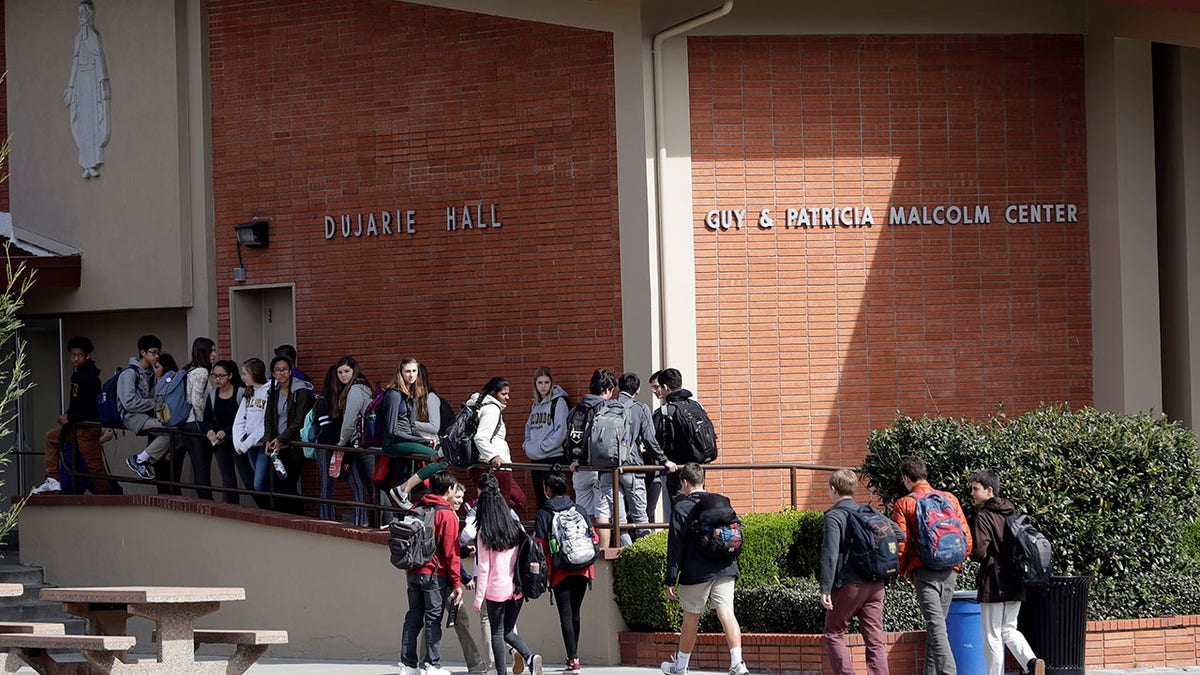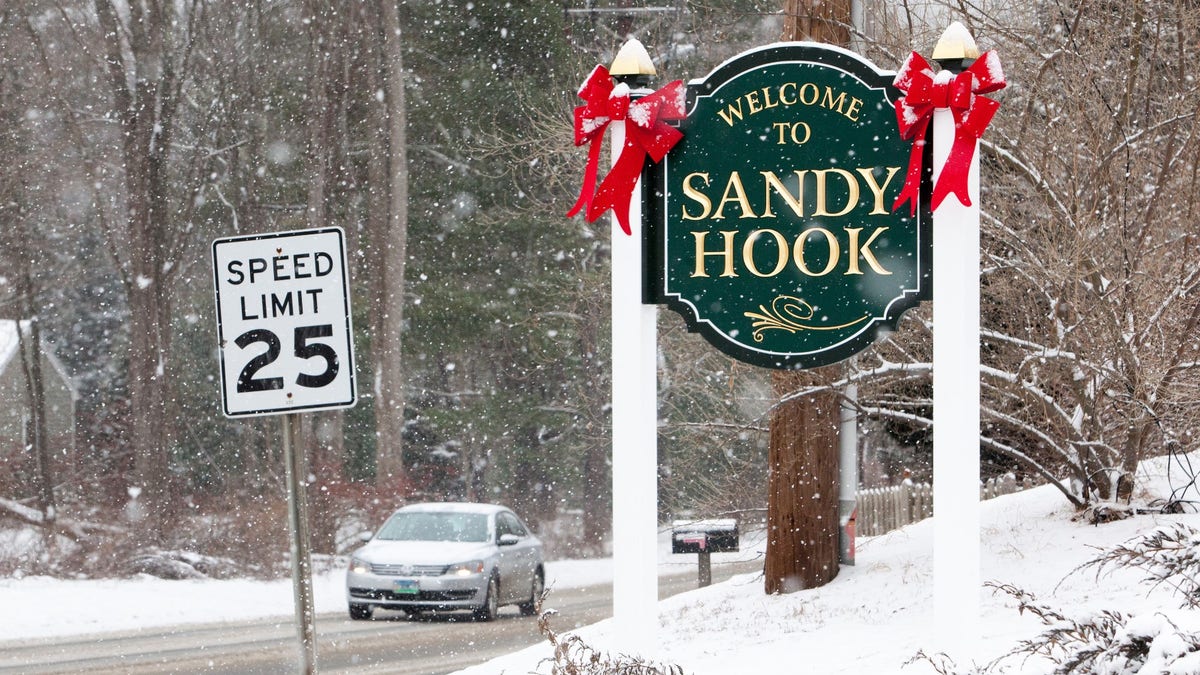Families reunited and emergency workers at scene following school shooting
At least six were rushed to the hospital with various injuries following St. Louis high school shooting. (KMOV)
School shootings in the United States have become more frequent over the past two decades, particularly in the last five years, but in recent months there has also been an alarming spike in fake threats and shooting hoaxes.
It usually goes like this. A school will receive an anonymous call or is tipped off to a social media post threatening a shooting. The investigation could take anywhere from a few hours to a few days. But until schools are given the all-clear, these threats are virtually indistinguishable from the real thing in terms of the emotional and psychological impact.

Westwood High School students make their way to classes, Tuesday, Oct. 18, 2022, in Mesa, Arizona. (AP Photo/Matt York)
In the past few months, schools across the United States have been experiencing just this scenario, and the trend doesn’t seem to be letting up. The National Association of School Resource Officers (NASRO), has tracked at least 60 instances of fake school shooting threats or hoaxes – sometimes referred to as "swatting" – across 30 states and Washington, D.C., since September.
"While nationwide statistics on these criminal events are not readily available, in 2013 one FBI official estimated that hundreds were occurring each year including locations other than schools. Open-source reporting indicates a recent surge of ‘swatting’ calls targeting schools in Arkansas, California, Colorado, Florida, Minnesota, Missouri, Texas, and Virginia," NASRO said in a September 26 statement.
As recently as Tuesday, a false report of multiple people being shot forced a Sacramento high school on lockdown for several hours.
While fake school shooting threats and swatting incidents do not claim any lives, they can cause long-lasting trauma for the students and teachers who experience them, particularly if they or someone they know has experienced the real thing.
"It’s disturbing anytime you have a false alarm, but especially now with students coming off of being out of the classroom for an extended period of time due to the pandemic," NASRO director of operations Mac Hardy told Fox News Digital.
FLORIDA SCHOOLS SEE SEVERAL ‘HOAX’ SWATTING CALLS, FORCING MULTIPLE LOCKDOWNS
"That is so unhealthy to a child because when you have that alarm, it sends your body into a fight-or-flight situation," he said. "What they see on the news, they’re seeing people their age being shot and that fear just amplifies the words they’re hearing."
"What they see on the news, they’re seeing people their age being shot and that fear just amplifies the words they’re hearing."
George Roberts, a superintendent at Baltimore County who has experienced a real school shooting, said threats can be "very traumatic" for students.
"It could weigh on children who don't have the cognitive abilities to go, ‘OK, this is just someone doing something very inappropriate. We know we’re going to be OK because of the measures put in place,'" he said.

Students walk between buildings at St. Francis High School in Mountain View, California. (Marcio Jose Sanchez)
Aside from the psychological impact on a child, fake threats and hoaxes can be a drain on law enforcement resources, particularly in rural communities.
"[If] you think about a rural school, and the county has maybe six or seven deputies on duty at a single time, and you have an incident that occurs at your high school in that county, then it could be every deputy that they have at that scene," Hardy said.
AT LEAST 3 KILLED IN ST. LOUIS HIGH SCHOOL SHOOTING, INCLUDING SUSPECT, A FORMER STUDENT
While there has been a common thread among the profile of school shooters, fake school shooting threats do not reflect any discernible pattern. In some incidents, the calls originated from outside the state and even outside the country. In other cases, a student was trying to get out of a test or simply wanted to cause mayhem without grasping the long-term consequences.
Roberts said he has seen threats spike around the anniversaries of major school shootings, such as the 10-year anniversary of the Sandy Hook shooting next month.
"You get those bad actors, those folks who just want to come out and send threats through email or via phone or the internet," Roberts said. "You see the incidents of increased swatting when you get close to significant yearly recognitions of Columbine, Sandy Hook [or] Parkland, being just three of the major ones."

A sign welcomes visitors to Sandy Hook in Newtown, Connecticut, December 2013. (Reuters/Michelle McLoughlin)
Both Hardy and Roberts stressed the importance of treating each threat as if it were real and for schools to never let down their guard.
"When we move to it, we’ve got to move to it as if it were a real threat and then determine if it’s real and relay that information back as quickly as possible," Hardy said. "We cannot become complacent and change our protocol to ‘we’ll respond when we determine that it’s a real call.’ That to me becomes another dangerous situation."
FLORIDA GIRL, 13, ARRESTED AFTER POSTING THREAT TO BLOW UP SCHOOL BECAUSE SHE WAS ‘BORED,’ COPS SAY
"There should not be any atrophy. There should not be any letting your guard down in situations like this by law enforcement or by educators," Roberts said. "It does get very tiring, and it does get very taxing … you're paying educators, and you're paying educators to do things that in the end may not be credible, but it just takes one time."
"It does get very tiring, and it does get very taxing … you're paying educators, and you're paying educators to do things that in the end may not be credible, but it just takes one time."
Roberts stressed communication between police, schools and the community as the key factor in mitigating threats both credible and non-credible. When police investigate threats and are transparent about what happened, it "permeates within the community at large," Roberts said.
"In many cases, it will cut down on the number of kids or young adults who think it's funny because they know that chances of them getting caught are greater," Roberts said.
CLICK HERE TO GET THE FOX NEWS APP
Would-be instigators, Roberts said, are usually dissuaded from carrying out a threat if they see news reports detailing another threat and how police handled the situation.
"That lets the potential bad actors know that unless you really, really want to take that risk, if you really, really want to take that chance, the chances of you getting caught are pretty high," he said.



